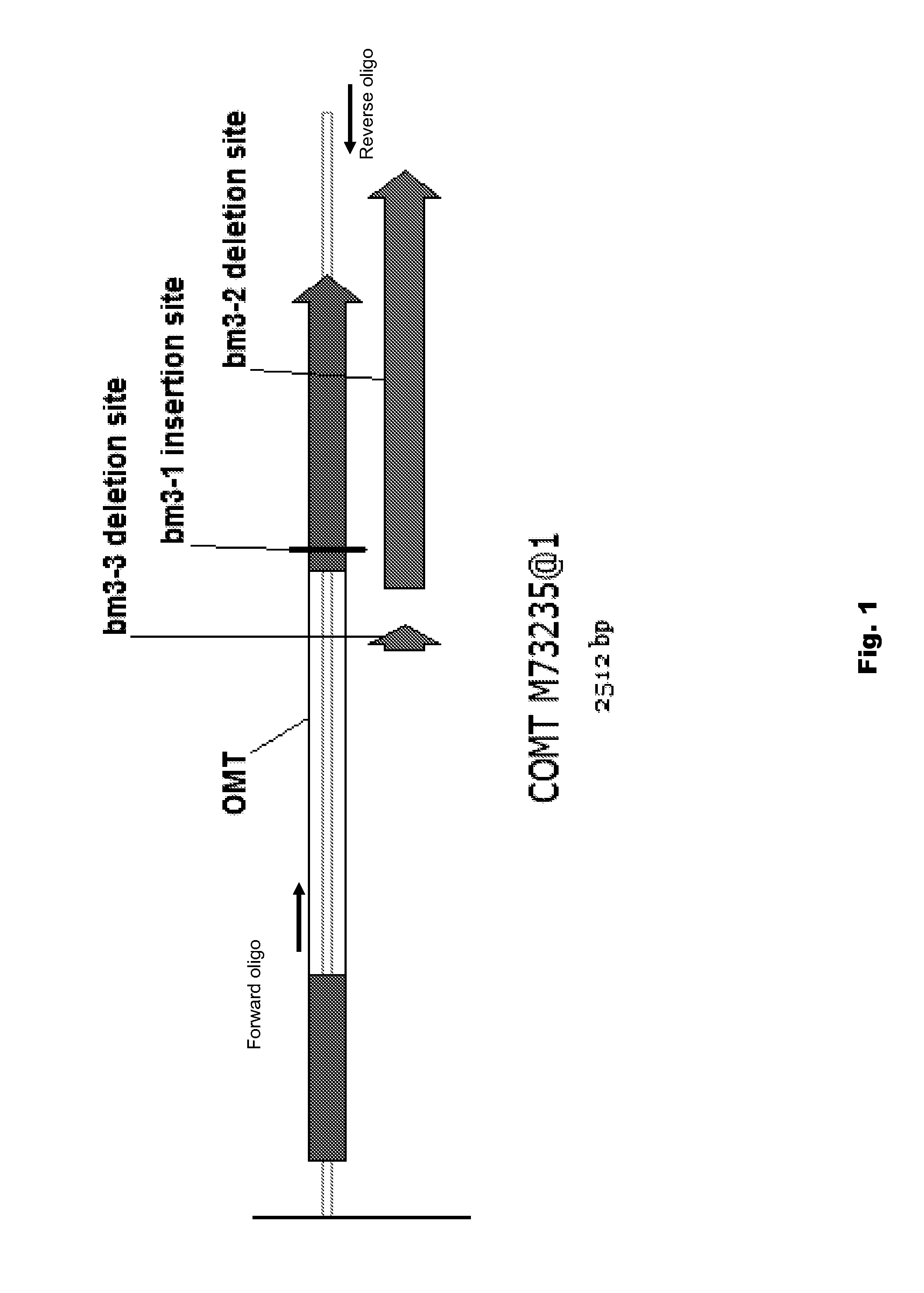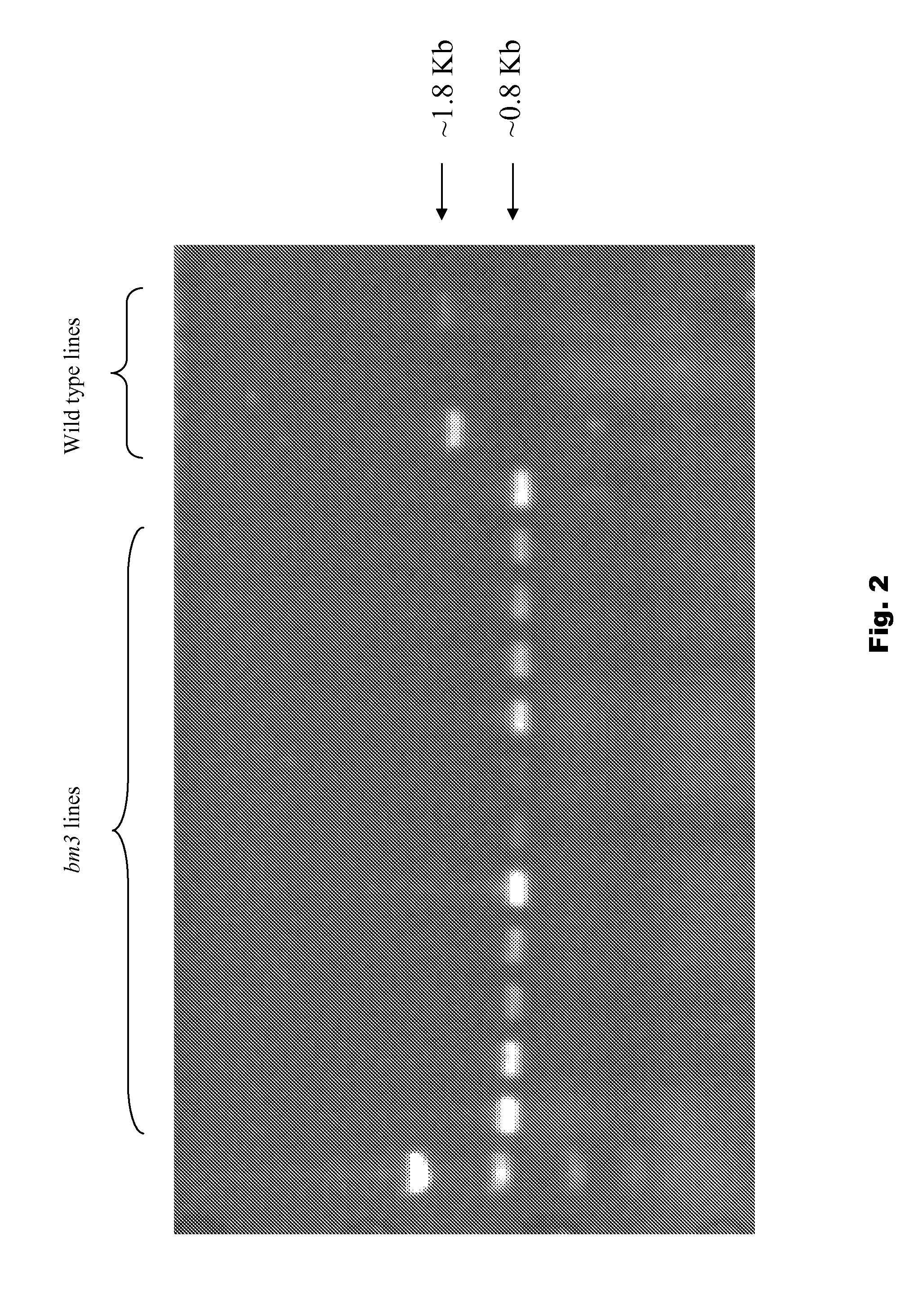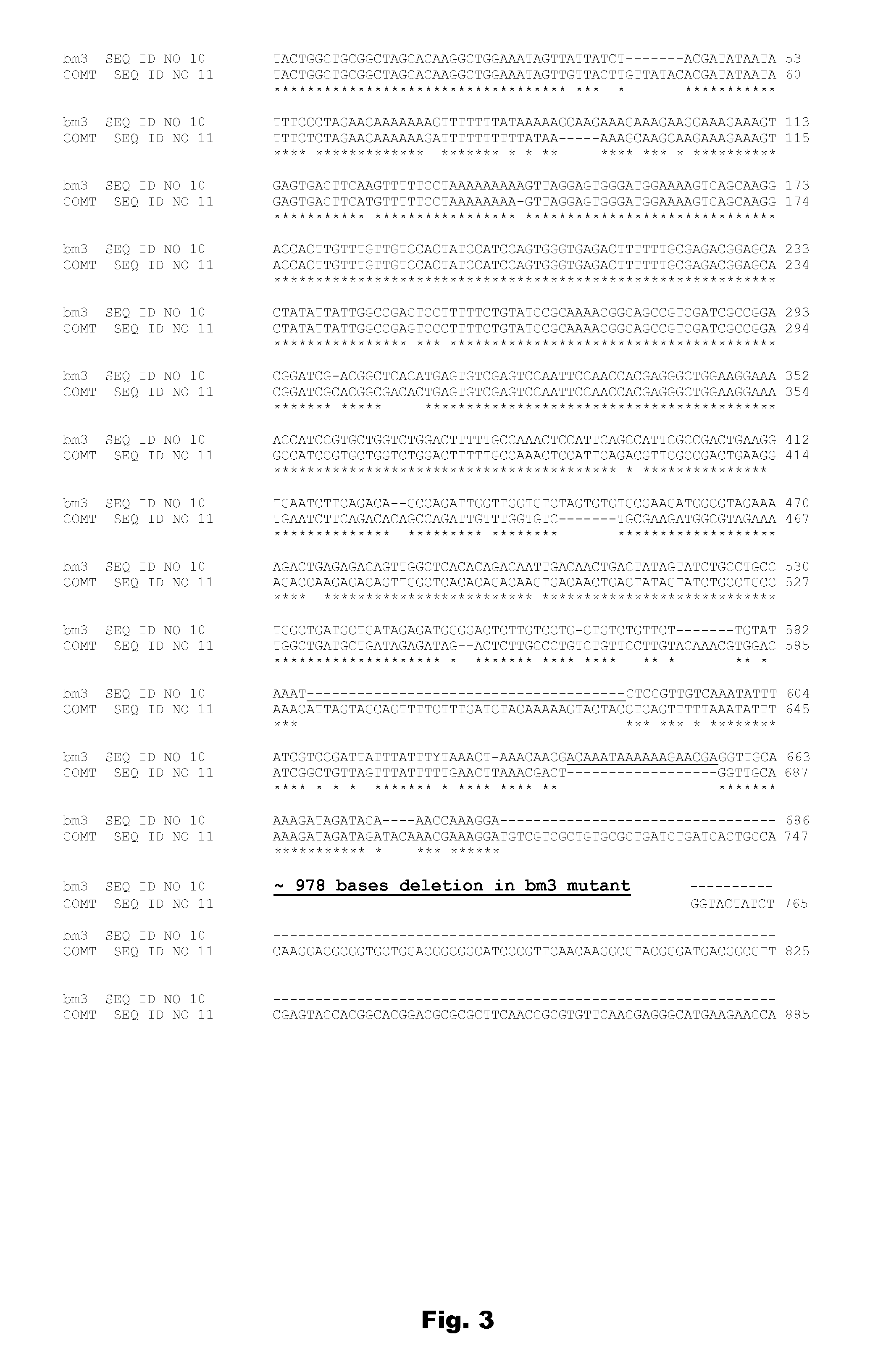Use of brown midrib-3 gene specific markers in maize for trait introgression
a technology of gene specific markers and brown midrib3, which is applied in the field of plant breeding, can solve the problems of not developing a rapid method for specifically detecting and testing the zygosity of a particular plant at the bm3 locus, and achieve the effect of improving the breeding process of bmr containing lines
- Summary
- Abstract
- Description
- Claims
- Application Information
AI Technical Summary
Benefits of technology
Problems solved by technology
Method used
Image
Examples
example 1
Materials and Methods
[0068]Plant and genetic material. Corn leaf samples containing homozygous bm3 alleles and homozygous wild type COMT alleles were provided.
[0069]Isolation of total genomic DNA and quantification. Eight leaf discs were punched per sample, and were ground to a fine powder using a Genogrinder® 2000. DNA was extracted with Qiagen DNeasy™ 96-well kit (Valencia, Calif.). Prior to PCR, DNA samples were quantified with Quant-iT™ PicoGreen® Quantification Kit (Invitrogen, Carlsbad, Calif.) using the manufacturer's instructions.
[0070]Cloning and sequencing of partial COMT gene. Corn genomic DNA fragments of a partial COMT gene were amplified from twelve bm3 lines and three non-bm3 samples (see Table 1) with oligos BM35_F (5′-TACTCTACTGGCTGCGGCTAGC-3′; SEQ ID NO:1) and BM34_R (5′-TAACCTTGATTGTTATTACTCGCACATGG-3′; SEQ ID NO:2) using ABI GeneAmp® PCR System 9700 (Applied Biosystems, Foster City, Calif.) in reactions containing 2.5 units of TaKaRa LA Taq® (Takara Bio Inc., Shi...
example 2
Sequence Analysis of Partial bm3 Mutations of the COMT Gene
[0077]To design a gene specific TaqMan® assay for bm3 mutants, precise sequence information was needed. Therefore, two oligonucleotides were designed to amplify partial COMT gene (FIG. 1) from genomic DNA from twelve bm3 and three non-bm3 lines. FIG. 2. These fragments were cloned into pCR4-TOPO® vector, and sent to Cogenics, Inc. for sequencing with T7 and T3 promoter, as well as BM1234R (SEQ ID NO:3). BM1234R is located in the middle of the COMT gene and was used to achieve the full-length sequence information. High quality sequences from nine bm3 lines were analyzed and aligned using Sequencher® 4.8. Consensus sequences from bm3 lines were compared with wild-type samples. Multiple deletion / insertion mutations at the 3′ end of the COMT gene were identified. For example, three mutations were confirmed and underlined. FIG. 3.
[0078]Gene specific assay design and validation. All the bm3 lines we have tested contain a large del...
example 3
Introgression of bm3 Mutation
[0084]The zygosity of a corn plant with respect to the bm3 mutation is determined as described, supra. It is determined that the corn plant is homozygous for the bm3 mutation. The plant is crossed through conventional plant breeding with a corn plant known to be homozygous for the wild-type COMT gene, and a corn plant homozygous for the bm3 mutation. F1 progeny of the cross are produced. F1 progeny of the cross are then selfed to produce F2 progeny. Samples of genomic DNA of the F2 progeny are prepared and the zygosity of the F2 progeny plants are determined as described, supra.
[0085]F2 progeny plants are selected that are homozygous for the bm3 mutation. The selected progeny are then assayed for low lignin content, and those progeny that exhibit desirably low lignin levels are further reproduced by crossing and selfing, and the resulting progeny are cultivated.
[0086]While the present invention has been described herein with respect to certain preferred ...
PUM
| Property | Measurement | Unit |
|---|---|---|
| Fraction | aaaaa | aaaaa |
| Volume | aaaaa | aaaaa |
| Volume | aaaaa | aaaaa |
Abstract
Description
Claims
Application Information
 Login to View More
Login to View More - R&D
- Intellectual Property
- Life Sciences
- Materials
- Tech Scout
- Unparalleled Data Quality
- Higher Quality Content
- 60% Fewer Hallucinations
Browse by: Latest US Patents, China's latest patents, Technical Efficacy Thesaurus, Application Domain, Technology Topic, Popular Technical Reports.
© 2025 PatSnap. All rights reserved.Legal|Privacy policy|Modern Slavery Act Transparency Statement|Sitemap|About US| Contact US: help@patsnap.com



